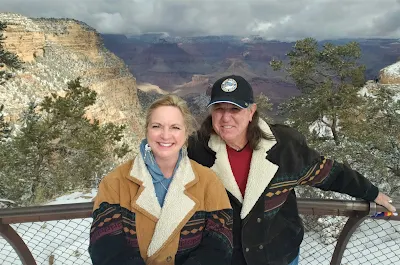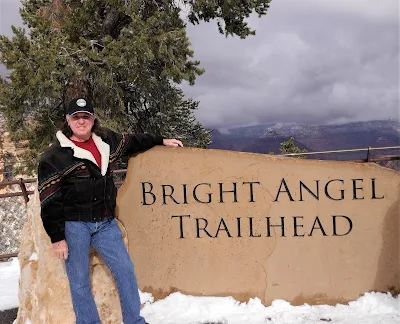On a recent adventure, I stopped at a gas station and started filling the tank. A gentleman at a nearby pump smiled over at me.
Actually, I believe he was smiling, since the corner of his eyes crinkled. With nearly a year of wearing masks outside, it’s now easier than ever to know a person’s expression.
Eyes crinkle – there’s a smile. I crinkled back while nodding my head.
“Do you enjoy Italian ice cream?” he asked, from beneath his green plaid face covering.
Not sure how to react, I just nodded, and crinkled my own eyes.
He pulled the bottom of his mask out a bit. “Sorry, stupid mask. I asked if you have had a chance to enjoy the Blythe Intaglios. Since you’re in Blythe and all.”
The truck filled, I shook my head. “Nope, I gotta go,” I mumbled through my own mask, a sharp looking black one, with Route 66 stenciled on it. I had no idea what he was talking about, and for once, I wasn’t curious.
“What were you discussing with that guy by the pump?” Laureen asked. She’s always curious.
“I don’t know. Something about an Italian dessert, I think.”
“What?”
“Yeah, weird,” I responded. “Something to the effect, if I enjoyed Blythe Intaglios. I didn’t even know Blythe had an Italian restaurant, let alone one serving ice cream.”
Silence for a moment, and then Laureen stated. “He was possibly talking about geoglyphs. Like the Nazca Lines in Peru.”
I started the truck. “Please, ask Mr. Google that, and let’s see if it’s ground art or Italian ice cream.”
Turns out, that the Blythe Intaglios are actually a group of figures etched into the desert floor. I mean, some pretty large figures of humans, animals, and swirling markings on the ground.
 |
| Intaglios is not a dessert - but this looks yummy |
Never knew they were there. In fact, there are over two hundred of these geoglyphs in the Colorado Desert.
Okay, what is a geoglyph?
According to the website, geographyrealm.com, a geoglyph is ‘a work of art which is created by arranging or moving objects within a landscape.’
I move stuff in my yard a lot, so I must have created geoglyphs without even knowing about it. Laureen should be proud.
“Honey, I moved that pile of leaves, leaving some pretty interesting rake marks.”
“You are nothing but a brilliant artist, creating a geoglyph such as that.”
The praise would never stop.
Actually, geographyrealm.com, wouldn’t agree with my depiction of the art work created by moving a bag of leaves from my yard.
‘For an art form to be regarded as a geoglyph it must generally be more than 4 meters in length. It must also be stated at this point that this art form is difficult to see or even be identified on the ground but are easily appreciated when seen from the sky.’
Then what is this Italian ice cream, the guy at the gas station was talking about? Oh, sorry, the Intaglios.
Sounds rather snooty to me.
Where would I find the definition for such a word? Of course, I used the website, myintaglios.com – where else would anyone think to look?
Intaglios, is an Italian word that means engrave. According to the experts, they must be with such a website, the term is even deeper.
‘An intaglio is an object that has had some shape of figure engraved or incised into its surface.’
Why couldn’t the Blythe thingies be referred to as the Blythe Geoglyphs? Why make the carvings on the ground sound like a dessert?
“Do you have room for a nice Italian Intaglio?”
“Ah, no, I am stuffed with the two helpings of Cacio e pepe. Thanks, though.”
Anyone, who has traveled to the boating meccas along the Colorado River, probably have passed the location many times. Yep, heading north along U.S. Highway 95 from Interstate 10, out of Blythe – you can't miss the place.
Pulling the boats, the jet skis, the trailers, the desert toys along that ribbon of black asphalt, you’ve passed the place.
Going to Parker – you’ve passed the place.
You get my point – you’ve passed the place.
But did you stop?
A stop is needed to view this intriguing historical site. It’s an easy, well-marked dirt road and the stop is worth it - even pulling boats or toys,
According to the Bureau of Land Management, the drawings in the Blythe area, were created by the natives living there about 450 to 2,000 years ago. But, other research indicated the drawings are only between 900 to 1200 years old.
 |
| Drone shot - shows the entire drawing |
Since there is no written record from that time period, it is only best guess work when these involved pieces of ground art work were actually scraped.
So, again, what exactly is a geoglyph? Think of the Nazca Lines in Southern Peru – those most folks are familiar with. They scraped out desert drawings of birds, people, animals, and other objects were made about 1500 to 2000 years ago. These drawings are huge, one measuring well over 1,200 feet long.
 |
| Giant spider in Nazca, Peru |
Laureen and I almost saw these drawings, when we visited Peru with our children years ago. We were headed to Cuzco, to visit Machu Picchu, with a planned stop at Nazca to take in the ancient land carvings.
Of course, we took the supposed twenty-one hour bus trip from Lima to Cuzco aboard First Class Bus Service. Nothing is too good for my family.
Took us nearly thirty-two hours. A muffler flew off two hours out of Lima, leaving our ears ringing for weeks, as if we had been working with jack hammers every day. When we reached Nazca at two in the morning, the bus suddenly needed a fuel pump.
The driver was very apologetic though. “I am so sorry, we won’t be able to see the lines in the ground. It’s too dark and we are way behind schedule.”
“What?” I asked, his mouth was moving, but all I could hear were bass drums pounding in my ears.
 |
| Not quite this bad - but pretty bad |
The flight from Lima to Cuzco is only a bit over an hour. Note to self, don’t be so cheap in my next life.
In the Blythe Intaglios area, there are six figures in three locations. There are three human figures – though Laureen swears one of them is an alien, two four footed animals, and a spiral – could be a snake or some other slithering reptile – I’m not sure. But what I am positive of is, that they are all worth taking a look at.
 |
| Desert animal and squiggly lined thing |
It is believed, per the BLM and others that they were created either by the Mohave or Quechan tribes, but as far as my research showed, no Native American tribe has taken credit for the drawings.
An interesting point is, that most of the 200 such geoglyphs located in the desert are near the Colorado River. Makes sense, since many of the tribes believe that this mighty river was the sustainer of life for the desert dwellers. Water means life, so, perhaps in respect, these giant ground drawings represent gratitude for having the life sustaining river so close by.
We may never know why they were drawn or by whom, and according to geographyrealm.com,
‘As of today, we can say only one thing – the geoglyphs were built by ancient people. By whom and for what purpose, remains a mystery.’
Since the Blythe Intaglios are so huge, for example, there is one depicting a male is 171 feet long, it is best to view them from the air.
 |
| The big guy - scientific for - The big guy |
I tried hoisting Laureen onto my shoulders so she could get a better look, but that ended in a complete disaster.
 |
| Hard to see from ground level - but see, you can |
So, the use of a helicopter or drone is the best way to view these marvelous art works. I settled on a drone.
Of course, the figures can easily be seen by looking at them from ground level, and that is what counts. To look, and appreciate the ingenuity of a culture who carved a belief into the ground, possibly without realizing people hundreds or thousands of years later would also appreciate their single dedication with such artwork.
We certainly did.

























